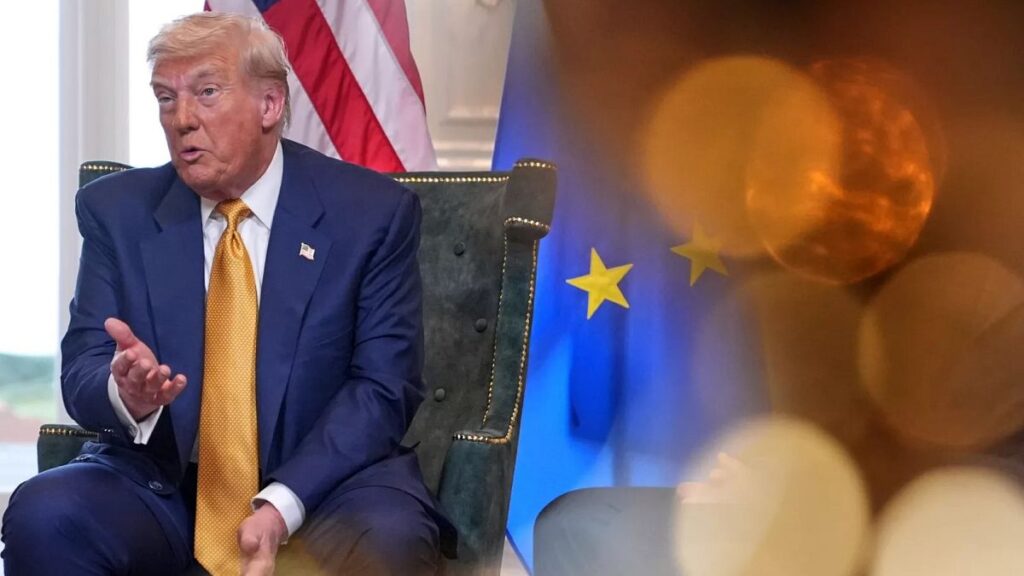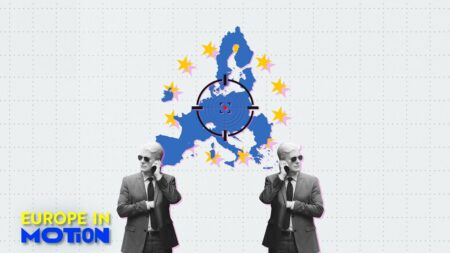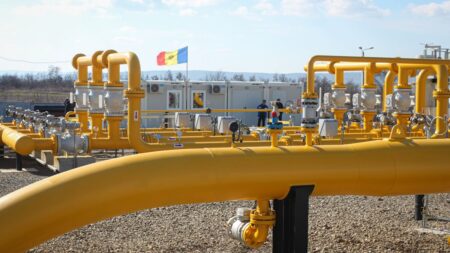After weeks of negotiations, the EU and the US reached an agreement on Sunday in the tariff dispute that has split the two since mid-March: the EU will face a 15% tariff on its exports to the US, European Commission President Ursula von der Leyen announced.
“We have stabilised on a single 15% tariff rate for the vast majority of EU exports. This rate applies across most sectors, including cars, semiconductors and pharmaceuticals,” she said, adding “this 15% is a clear ceiling – no stacking, all-inclusive – so it gives much-needed clarity for our citizens and businesses.”
Cars, which have been subject to a 27.5% tariff for several months, will now face a 15% tariff. A modest victory for German manufacturers.
Von der Leyen also announced that zero-for-zero tariffs will apply to certain chemicals, certain generic drugs, semiconductor-making equipment, some agricultural products (but with the exclusion of all sensitive products like beef, rice, ethanol, sugar or poultry), some natural resources and critical raw materials.
However, uncertainties remain regarding the details and the sectors covered by the 15% rate, the legal certainty of the deal reached on Sunday and the purchase and investment commitment of the EU.
1. No legally binding agreement yet
The agreement reached will not be legally binding for both parties for some time. When exactly remains uncertain. A joint statement is expected to be released by 1 August— the deadline set by US President Donald Trump when he threatened to impose a 30% tariff on the EU.
“It will be a relatively light joint statement” an EU official said, adding that the EU is also awaiting the adoption of an executive order by the US that would bring some certainty to what has been agreed. Until then, negotiations on exemptions to the 15% tariffs will continue.
“Given that we want to make sure that the US delivers on its parts quickly, we will also want to deliver quickly on our part,” the official said, adding: “We are currently looking into the exact legal basis together with Council and the European Parliament.” A bilateral international agreement between the EU and the US would take time, so other instruments might be considered by the Commission.
2. Which EU products are exempt?
Aircraft will be exempt from the 15% tariffs, meaning they will be sent to the US with no tariffs. The production lines in these sectors are too intertwined for the US to risk making their aircraft more expensive.
However, the EU will keep negotiating other exemptions, with wine and spirits high on its agenda. Since the beginning of the negotiation, EU industries have continuously warned about the consequences of a deal that would penalise them.
“We truly believe the trade of wine is of great benefit for both EU and US companies, and it must be included in the 0-for-0 tariff arrangement,” Marzia Varvaglione, president of the Comite europeen des entreprises de vin said in a statement on Sunday, adding: “It’s not just the EU side saying this—our US counterparts have also been strong advocates for protecting this vital exchange.”
3. Steel and aluminium: A quota system still to be negotiated
The US currently imposes 50% tariffs on steel and aluminium. This will stay until both sides agree on a quota system. The Commission remains confident of its leverage in the coming talks however. “I think that is where economics kick in and business interests kick in,” the same EU official said, adding that the bloc’s provision of speciality steel is something that “US manufacturing badly needs”.
But the European steel industry appeared rattled on Monday. “If a zero tariff on our traditional exports to the US is confirmed, we would be going in the right direction,” Axel Eggert, director general of the European Steel Association (EUROFER) said, but he added: “There is no clarity yet. As always, the devil is in the detail.”
The uncertainty is offset by a commitment of the EU and the US to jointly fight global overcapacities, mainly coming from China.
4. Energy: The EU’s purchase commitment will depend on its industry.
The EU committed to buy $750 billions’ worth of US energy over the next three years. That’s to say $250 billion annually directed towards US liquefied natural gas, oil and nuclear industries. “We’ve been looking at our needs also in terms of the phasing out of energy imports from Russia,” the EU official said.
However the official conceded that there is no public commitment to delivering on this since the EU and its institutions will not be doing the actual buying. “We can help with aggregating demand and facilitating certain things, and we can look at where there are maybe bottlenecks in infrastructure,” the official said.
The EU also committed to purchasing US AI microchips on top of the $750 billion.
5. EU investment in the US will depend on business
EU companies will invest $600 billion in the US, according to the deal. But here again, there’s no public authority that will be monitoring this, as it is the case in the Japan-US deal reached on 22 July where investments are equity, loans and guarantees from state-run agencies.
However the Commission ensures it had detailed contacts and discussions with different business associations and companies in order to see what their investment intentions were.
“We have basically been aggregated what we know about investment intentions of private companies. And the way this will be expressed in the joint statement is that it is an intention,” another EU official said, adding: “So it is not something that the EU as a public authority can guarantee.”
Read the full article here

















